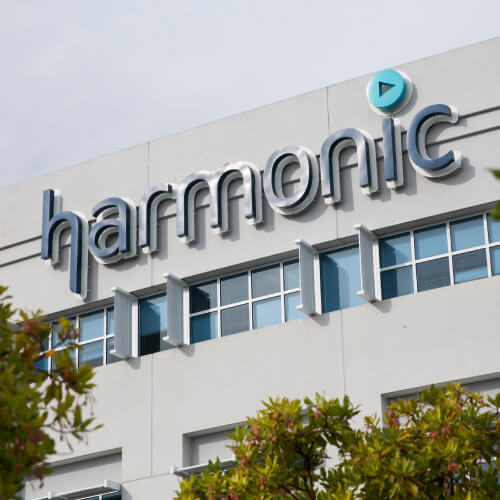Harmonic's CEO says there's 'growing consensus' from cable ops to pursue a distributed architecture that pairs a virtual CMTS with remote PHY nodes – an option used by Comcast and reportedly selected by Charter.

Light Reading's scoop last week that Charter Communications is pursuing a distributed access architecture (DAA) based on a virtual cable modem termination system (vCMTS) and remote PHY nodes weighed heavily into Harmonic's third quarter earnings call Monday.
Charter wasn't identified by name by analysts or CEO Patrick Harshman, but it was obvious that Charter's technological selection – one that follows a path already taken by Comcast – was central to the call's discussion between Harmonic execs and industry analysts.
"There is growing consensus, which is not complete … that there is a kind of convergence of opinion around the benefits of virtualized CMTS and remote PHY," Harmonic President and CEO Patrick Harshman said when an analyst asked him to comment on whether it's true that the cable industry is indeed shifting its focus in that direction.
Figure 1:  (Source: Kristoffer Tripplaar/Alamy Stock Photo)
(Source: Kristoffer Tripplaar/Alamy Stock Photo)
"To the extent that happens, it's very good news for Harmonic," Harshman added. Notably, Comcast, a marquee customer of Harmonic's "CableOS" platform and remote PHY gear, contributed 38% of revenues to Harmonic's Q3 2022 results.
Harshman's commentary comes as multiple sources tell Light Reading that Charter, following a review of its network evolution plan, is now focused on a distributed architecture focused on the vCMTS and remote PHY. That's a step along the way to Charter's eventual deployment of DOCSIS 4.0 – a platform that will support symmetrical multi-gigabit speeds alongside enhanced security and low-latency capabilities. Charter is expected to reveal more about its network evolution strategy following a CEO transition that will take effect in December, but told Light Reading that it "will incorporate a variety of approaches."
Charter had previously focused on the remote MACPHY variant of DAA. While remote PHY extends physical layer components of the CMTS (such as QAM modulators and demodulators) to the fiber node, remote MACPHY also extends the MAC (media access control) processing to the node.
But Harshman was clear that Harmonic is also "prepared and capable" of supporting remote MACPHY. Some operators are indeed going in the remote MACPHY direction, including Mediacom Communications, which recently selected Harmonic rival CommScope as its "primary vendor" for DAA.
But Charter and Comcast, which have a combined 62.5 million broadband subs, bring a different level of heft and scale to bear. It's possible that other major operators, including Cox Communications, Rogers Communications and Shaw Communications could take a similar path to DAA.
DAA debate ongoing as competitive 'urgency' rises
"I don't want to suggest … that the debate or discussion is over. But, indeed, more of those who are on the fence, I think, are leaning toward remote PHY," Harshman said. "Obviously, this growing consensus is good news for us considering the huge technology and deployment expertise we have in virtualized CMTS and remote PHY."
He suggested there's an "urgency" among cable operators to push ahead with next-gen network strategies as they face off against increasing competition from fiber and fixed wireless access service providers.
"It's just becoming a much more competitive market for traditional cable operators," Harshman said. "I think some of them are deciding that the time to evaluate different technology alternatives is over and the time to begin planning to get on with it is at hand."
Harshman estimated that operators serving about one-third of cable broadband subscribers worldwide have begun work around DAA in some form or fashion. "We're kind of crossing the chasm point," he said.
CableOS progress
Deployments of CableOS, the basis of Harmonic's vCMTS, continued into Q3. Harmonic said CableOS now serves about 10.9 million cable modems, up 179% year-over-year. In addition to Comcast, other deployment partners include Rogers Communications, Vodafone and GCI.
Harmonic has also adapted CableOS to run on converged networks that operate both hybrid fiber/coax (HFC) and fiber-to-the-premises (FTTP) plant. DAA will enable cable operators to deploy FTTP from the node on a targeted basis. Harshman noted that Harmonic notched a significant fiber win for CableOS with an existing tier 1 international cable customer, punctuated by an initial "multi-million dollar purchase order." That builds on a couple of domestic CableOS fiber wins.
"Fiber-on-demand capability is becoming a must-have for our customers," Harshman said.
Financial snapshot
Harmonic posted Q3 2022 revenues of $155.7 million, up 23.3% year-over-year, but down from the $157.4 million pulled in during the prior quarter.
Harmonic's Broadband segment (formerly Cable Access segment) generated revenues of $91.9 million, up 59.6% versus the year-ago quarter.
Its Video segment brought in $63.8 million, down 7.1% from a year ago, primarily driven by a reduction in Harmonic's legacy appliance business. However, video revenues attached to Harmonic's software-as-a-service (SaaS) business jumped 64% in the quarter.
Here's how Harmonic's new Q4 2022 guidance stacks up:
Total revenues in the range of $151 million to $165 million, up from prior guidance of $155 million to $165 million.
Broadband revenues of $345 million to $350 million, up from a prior range of $335 million to $345 million.
Video segment revenues of $267 million to $276 million, down from a prior range of $272 million to $282 million.
Related posts:
— Jeff Baumgartner, Senior Editor, Light Reading
About the Author(s)
You May Also Like











